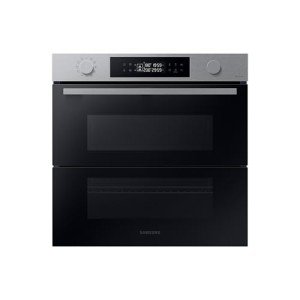The Rise of Built-In Ovens: A Seamless Approach to Modern Cooking
In contemporary kitchens, where design looks blend seamlessly with functionality, one device stands apart as a true video game changer: the built-in oven. As house owners and chefs alike continue to look for ingenious options that improve their cooking experience, built-in ovens have ended up being significantly popular. This post checks out the benefits, considerations, and trends surrounding built-in ovens, highlighting why they are an important feature in modern-day cooking spaces.
What is a Built-In Oven?
A built-in oven is a kitchen home appliance developed to be integrated into the cabinets of a kitchen area rather than standing alone. Unlike standard freestanding ovens, which can be moved and placed anywhere, built-in ovens been available in different styles and sizes to fit specifically within designated areas. builtin ovens in single or double setups, these ovens use a streamlined appearance that matches modern kitchen area styles.
Benefits of Built-In Ovens
1. Space-Saving Design
Among the most appealing benefits of built-in ovens is their space-saving design. By integrating the oven into cabinets, you can release up valuable counter and floor area. This is particularly useful in smaller cooking areas, where taking full advantage of space is important. Built-in ovens can be installed at eye level, making them more available and reducing the requirement to flex down.
2. Visual Appeal
Built-in ovens add to a smooth and cohesive kitchen design. Offered in various finishes-- such as stainless steel, black, white, and custom cabinetry-- they can blend perfectly into the overall decor. This aesthetic appeal enhances the kitchen area's visual consistency and elevates the area, producing a modern and advanced atmosphere.
3. Boosted Functionality
Numerous built-in ovens come geared up with sophisticated cooking technologies, such as convection cooking, steam ovens, and wise functions. These enhancements enable flexible cooking options, making it much easier to achieve professional-level results at home. Smart built-in ovens can even connect to Wi-Fi, allowing users to manage the oven remotely, get notifications, and gain access to a range of cooking programs and dishes.
4. Improved Ventilation
Due to the fact that built-in ovens can be integrated with kitchen area hoods and ventilation systems, they can help maintain better air quality and lower cooking smells. This is particularly substantial for those who enjoy to prepare with fragrant spices and ingredients, as an efficient ventilation system can keep the kitchen comfy and inviting.

5. Customization Options
Built-in ovens use a large range of modification alternatives to suit specific cooking designs and needs. From professional-grade appliances with multiple cooking modes to compact styles for smaller sized kitchens, property owners can choose the oven that fits their particular requirements. Numerous makers likewise offer personalized front panels, allowing you to match the oven's appearance to your kitchen cabinetry for a genuinely merged look.
Considerations When Choosing a Built-In Oven
While built-in ovens have lots of benefits, there are essential considerations to bear in mind before purchasing:
1. Cost
Built-in ovens typically come with a higher price than their freestanding equivalents due to their design and installation requirements. It's crucial to consider both the expense of the oven and any extra costs connected to cabinets adjustments or setup.
2. Setup Requirements
Installing a built-in oven frequently needs expert help, especially if you need to modify existing cabinetry. Ensure that you think about any costs associated with installation, including labor and potential kitchen cabinetry adjustments.
3. Size and Dimensions
Before buying a built-in oven, determine the designated area accurately to guarantee an appropriate fit. Built-in ovens been available in various sizes and configurations, so selecting one that lines up with your needs and kitchen design is crucial.
4. Way of life and Usage
Consider your cooking practices and needs when choosing a built-in oven. If you regularly host big events, a double oven may be more helpful. On the other hand, if you have a compact kitchen, a single-wall oven may be adequate.
Patterns in Built-In Ovens
The kitchen appliance market is continuously evolving, and built-in ovens are not exempt from emerging patterns. Some current patterns include:
Smart Technology Integration: With the increase of wise home innovation, built-in ovens now frequently feature connectivity options. This permits users to keep an eye on cooking progress and change settings through mobile apps.
Energy Efficiency: As sustainability ends up being a priority, lots of manufacturers are purchasing energy-efficient built-in ovens that lower energy intake while keeping performance.
Multi-functional Designs: Built-in ovens now provide functions such as air frying, slow cooking, and steaming, supplying flexibility that meets a wide variety of cooking approaches.
Conclusion
Built-in ovens unquestionably represent a best mix of design, function, and convenience in today's kitchen areas. As more homeowners select this modern solution, the focus shifts to creating a cooking area that is as visually pleasing as it is useful. Whether you are constructing a new home or remodeling your cooking area, considering a built-in oven might raise your cooking experience and change your kitchen area into a stylish and functional sanctuary. With an array of options available and continuous developments in innovation, built-in ovens stay a standout option for both novice cooks and culinary lovers alike.
